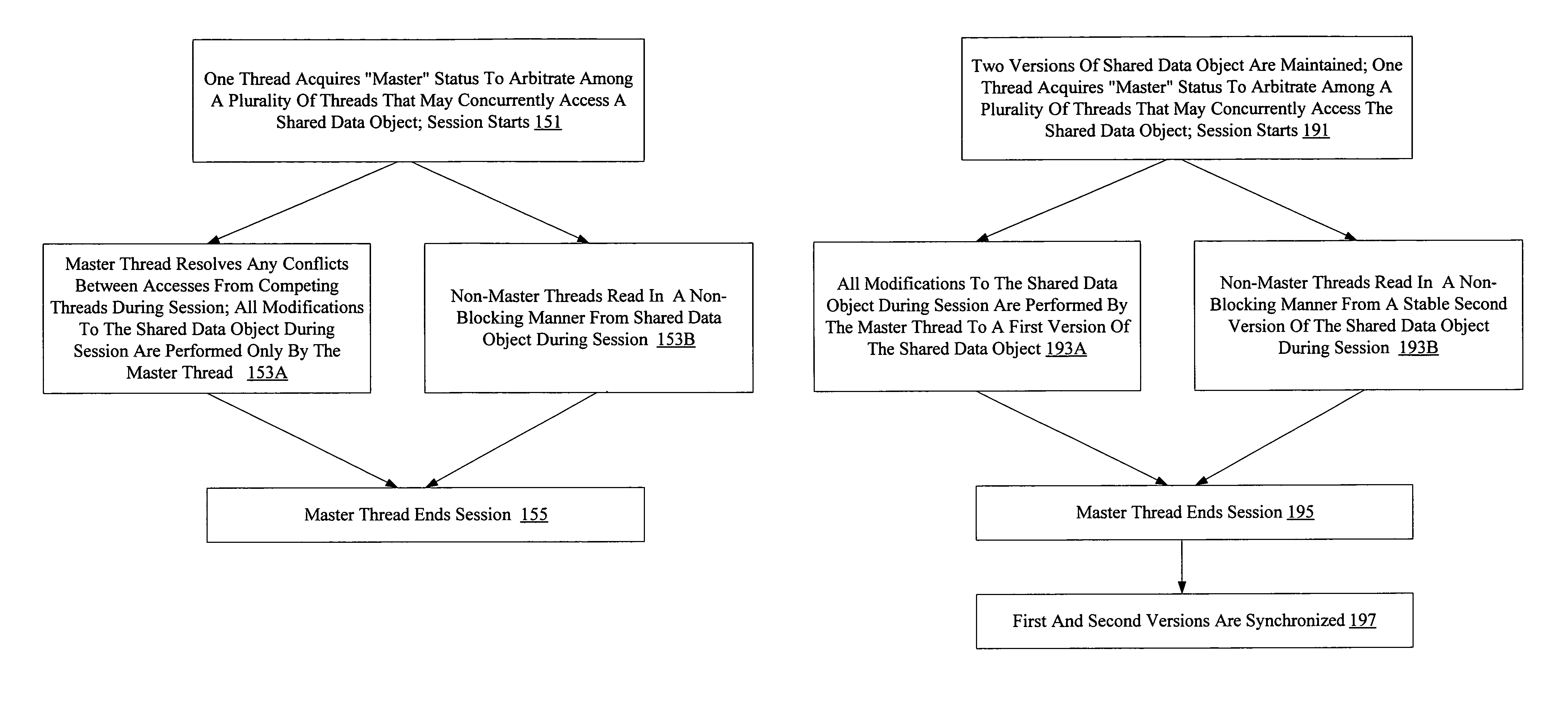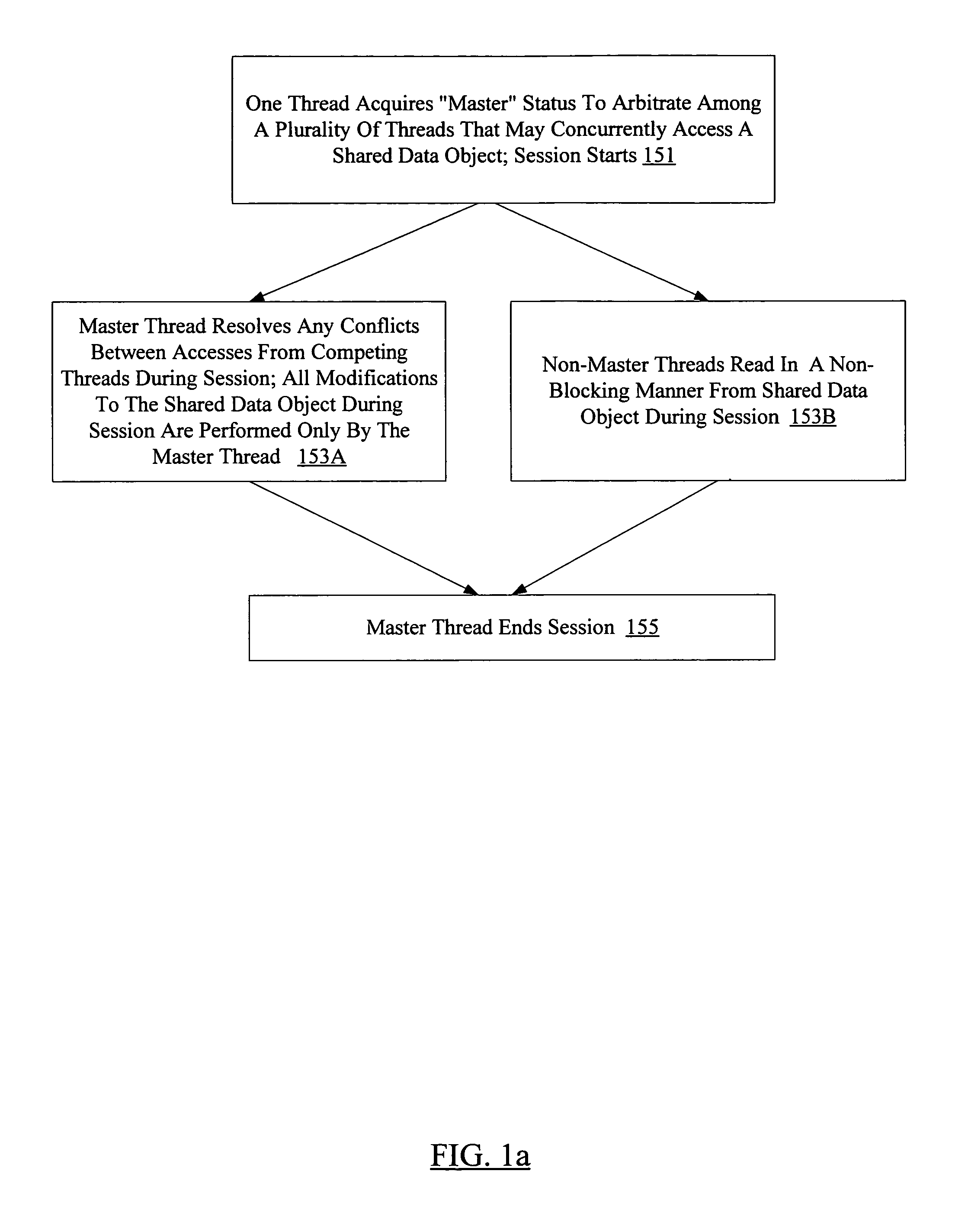Address level synchronization of shared data
a technology of shared data and address level, applied in the field of computer systems, can solve the problems of increasing the complexity of code design and verification, affecting the application throughput, and affecting the application, so as to achieve greater levels of concurrent access and increase application throughpu
- Summary
- Abstract
- Description
- Claims
- Application Information
AI Technical Summary
Benefits of technology
Problems solved by technology
Method used
Image
Examples
Embodiment Construction
[0021]FIG. 1a is a flow diagram illustrating aspects of the operation of a mechanism to coordinate concurrent access from multiple threads to a shared data object, according to one embodiment. In the depicted embodiment, from among a plurality of threads that may access a shared data object, one thread acquires a “master” status to arbitrate among the requests of competing threads during a given session of data access to the shared data object (block 151). During the session, the master thread resolves any conflicts resulting from attempts to access or modify the shared data object by other, “non-master” threads, and only the master thread may apply modifications to the shared data object during the session (including, for example, its own modifications as well as non-conflicting modifications from other threads) (block 153A). The same thread remains master during the entire session, resolving conflicts and performing modifications on behalf of any other threads. Meanwhile (block 15...
PUM
 Login to View More
Login to View More Abstract
Description
Claims
Application Information
 Login to View More
Login to View More - R&D
- Intellectual Property
- Life Sciences
- Materials
- Tech Scout
- Unparalleled Data Quality
- Higher Quality Content
- 60% Fewer Hallucinations
Browse by: Latest US Patents, China's latest patents, Technical Efficacy Thesaurus, Application Domain, Technology Topic, Popular Technical Reports.
© 2025 PatSnap. All rights reserved.Legal|Privacy policy|Modern Slavery Act Transparency Statement|Sitemap|About US| Contact US: help@patsnap.com



